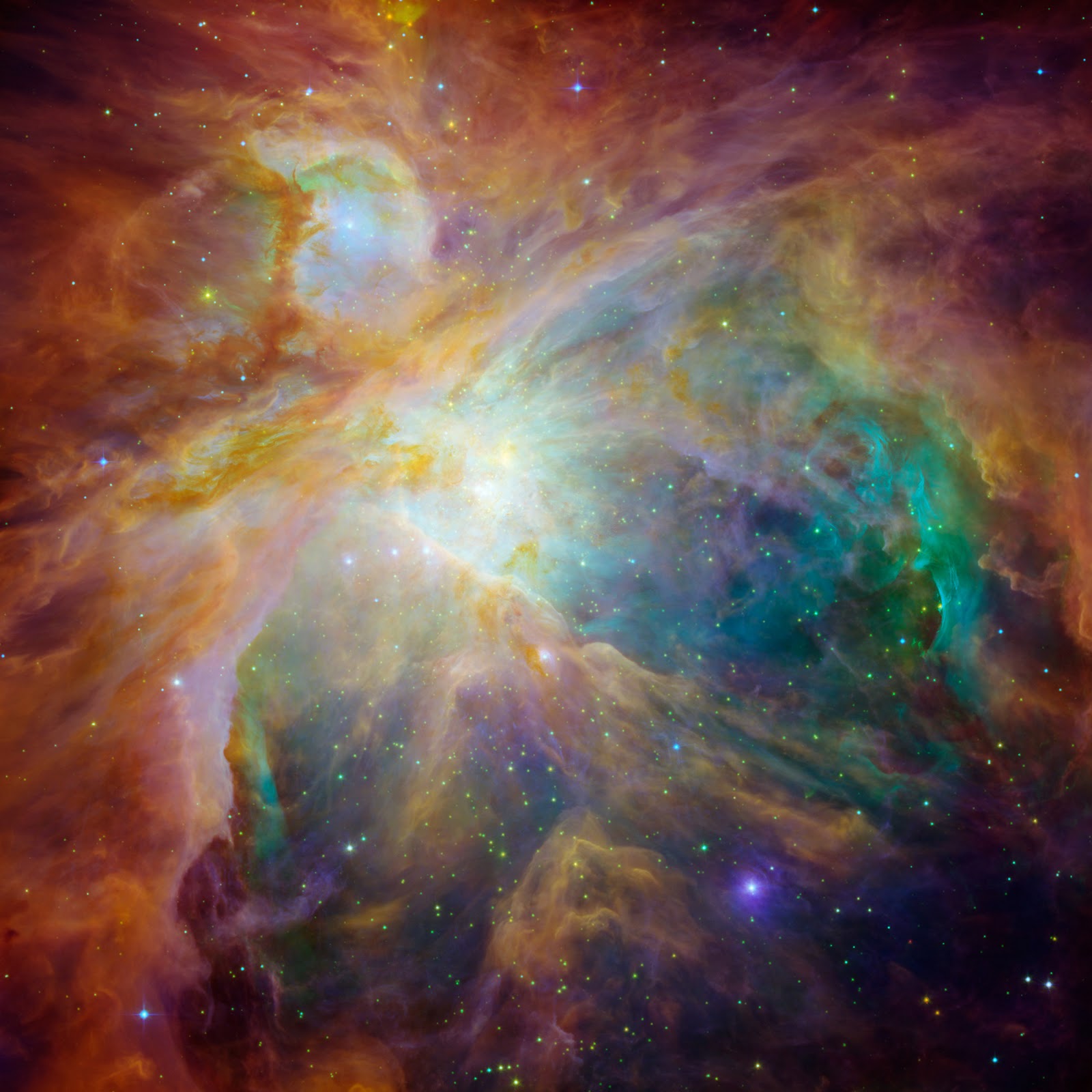- Distance to Earth: 1,344 light years
- Age: 3 million years

The red hue is well-understood to be caused by Hα (H-alpha (Hα) is a specific red visible spectral line in the Balmer series created by hydrogen with a wavelength of 656.28 nm, which occurs when a hydrogen electron falls from its third to second lowest energy level) recombination line radiation at a wavelength of 656.3 nm. The blue-violet coloration is the reflected radiation from the massive O-class(Most stars are currently classified using the letters O, B, A, F, G, K, and M, where O stars are the hottest and the letter sequence indicates successively cooler stars up to the coolest M class) stars at the core of the nebula.
Interstellar clouds like the Orion Nebula are found throughout galaxies such as the Milky Way. They begin as gravitationally bound blobs of cold, neutral hydrogen, intermixed with traces of other elements. The cloud can contain hundreds of thousands of solar masses and extend for hundreds of light years. The tiny force of gravity that could compel the cloud to collapse is counterbalanced by the very faint pressure of the gas in the cloud.
 Whether due to collisions with a spiral arm, or through the shock wave emitted from supernovae,
the atoms are precipitated into heavier molecules and the result is a
molecular cloud. This presages the formation of stars within the cloud,
usually thought to be within a period of 10-30 million years, as regions
pass the Jeans mass
and the destabilized volumes collapse into disks. The disk concentrates
at the core to form a star, which may be surrounded by a protoplanetary
disk. This is the current stage of evolution of the nebula, with
additional stars still forming from the collapsing molecular cloud. The
youngest and brightest stars we now see in the Orion Nebula are thought
to be less than 300,000 years old, and the brightest may be only 10,000 years in age.
Whether due to collisions with a spiral arm, or through the shock wave emitted from supernovae,
the atoms are precipitated into heavier molecules and the result is a
molecular cloud. This presages the formation of stars within the cloud,
usually thought to be within a period of 10-30 million years, as regions
pass the Jeans mass
and the destabilized volumes collapse into disks. The disk concentrates
at the core to form a star, which may be surrounded by a protoplanetary
disk. This is the current stage of evolution of the nebula, with
additional stars still forming from the collapsing molecular cloud. The
youngest and brightest stars we now see in the Orion Nebula are thought
to be less than 300,000 years old, and the brightest may be only 10,000 years in age.






0 comments:
Post a Comment
IT'S YOUR TURN...
To respond : Drop in just anything but spam. Please don't drop comments just to add your link here. You can use basic HTML tags.
Important : If you're looking for further clarification, advice or support, please address by comment.